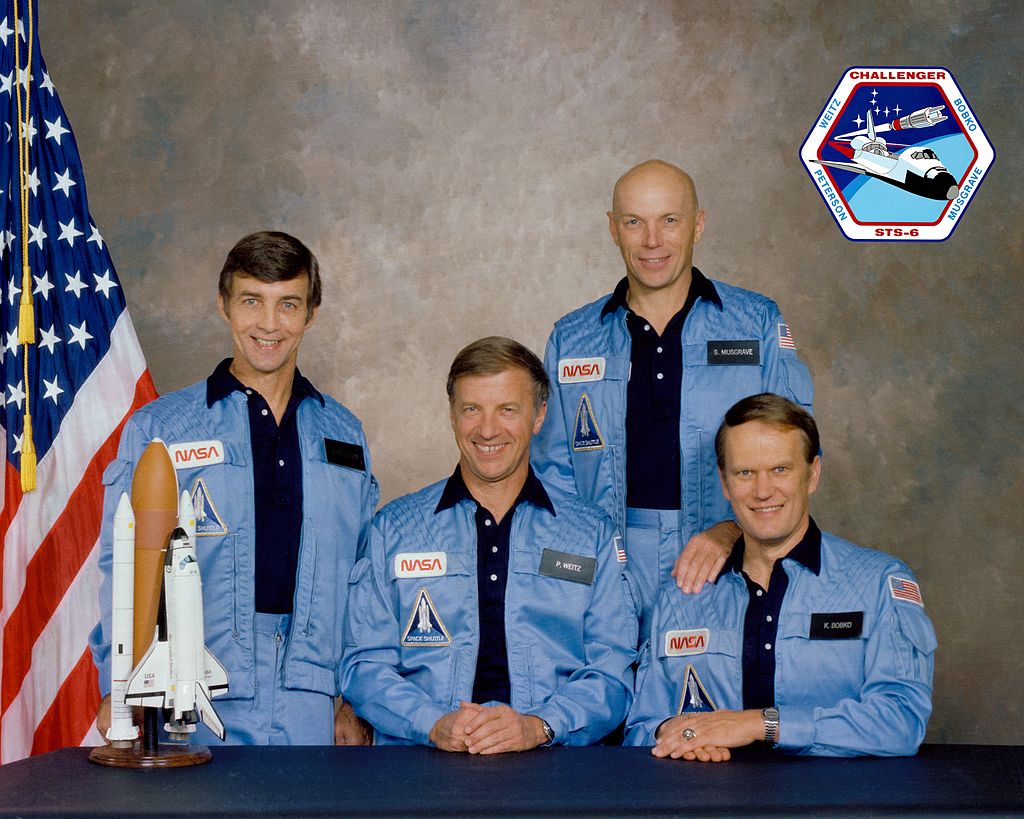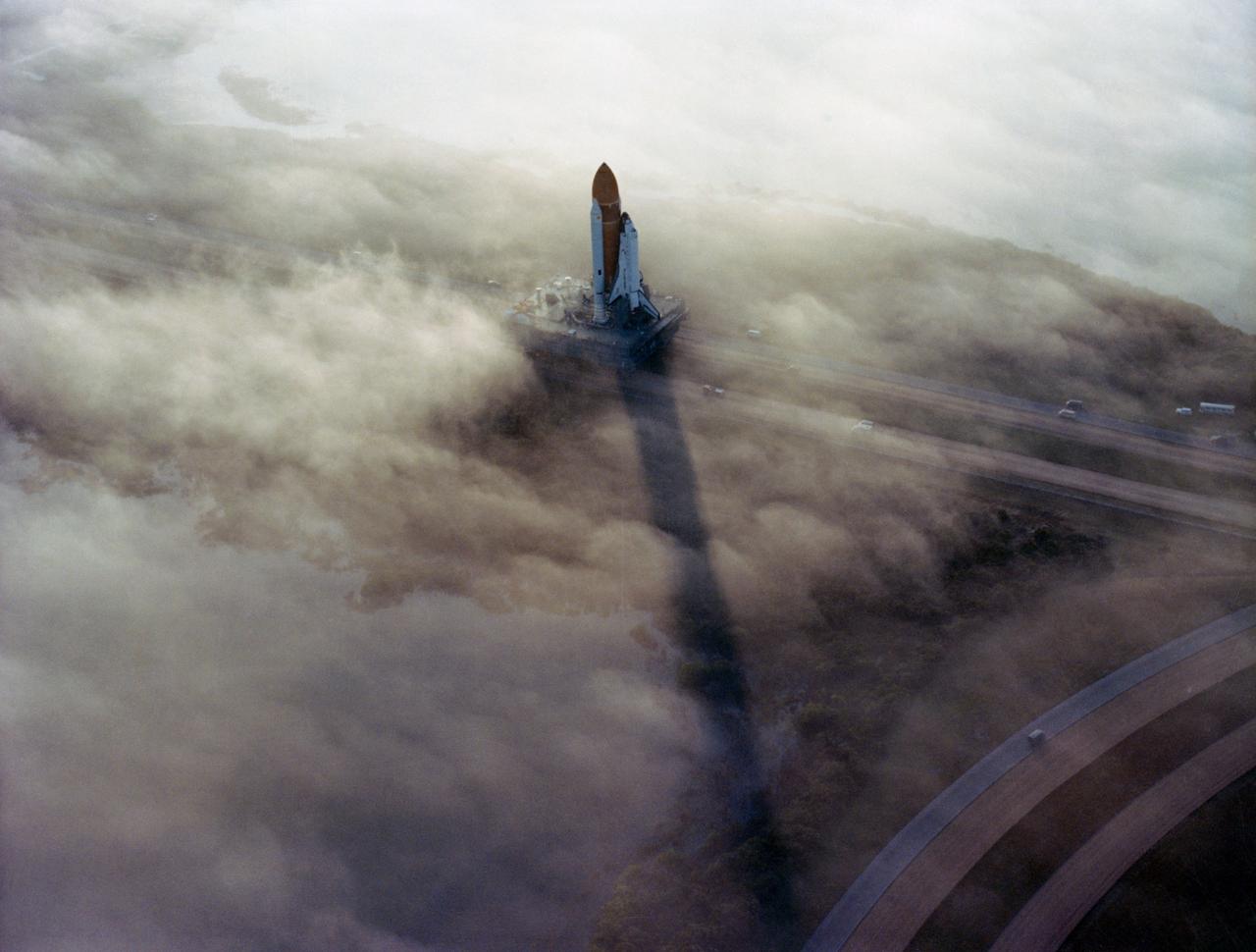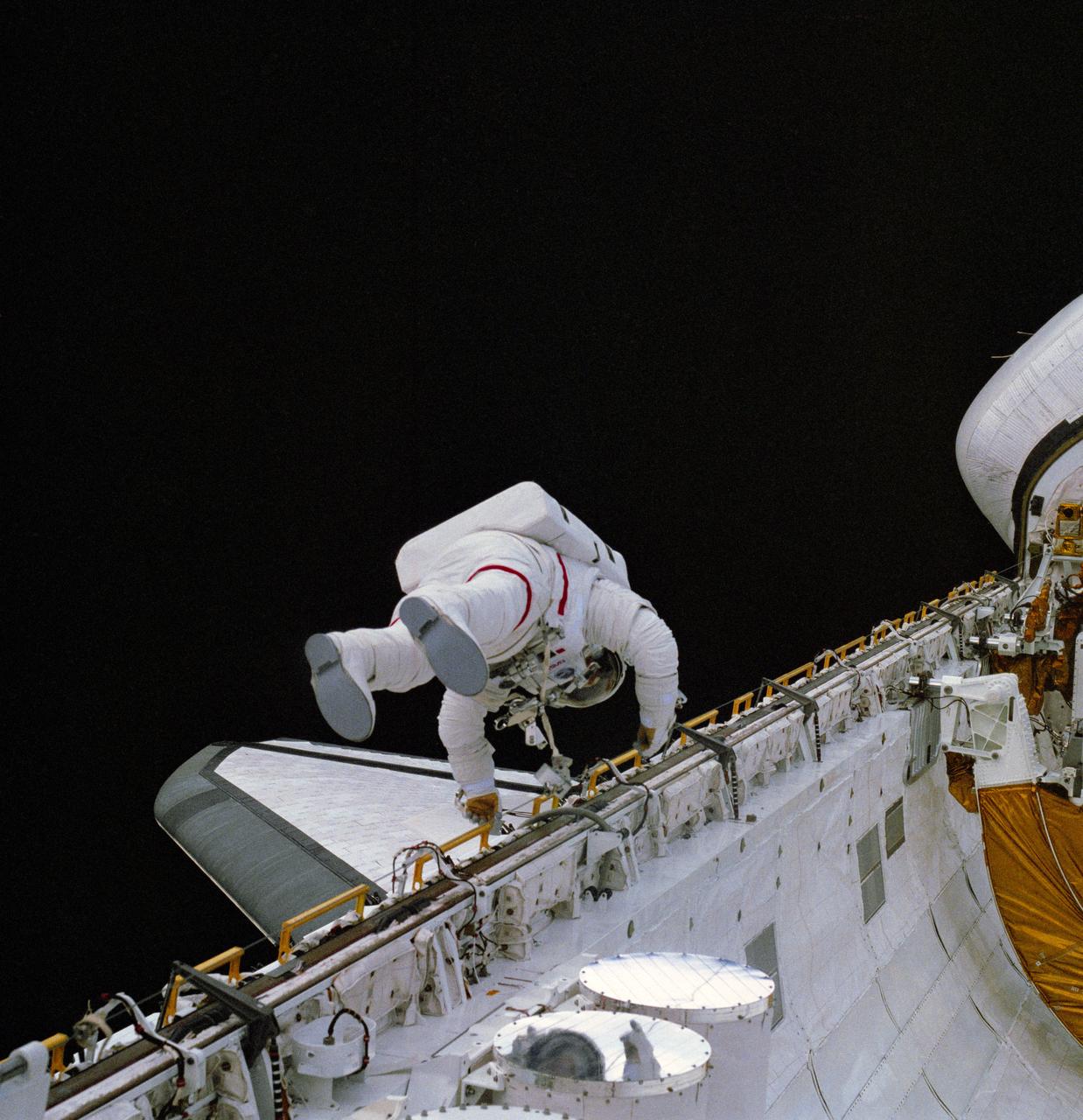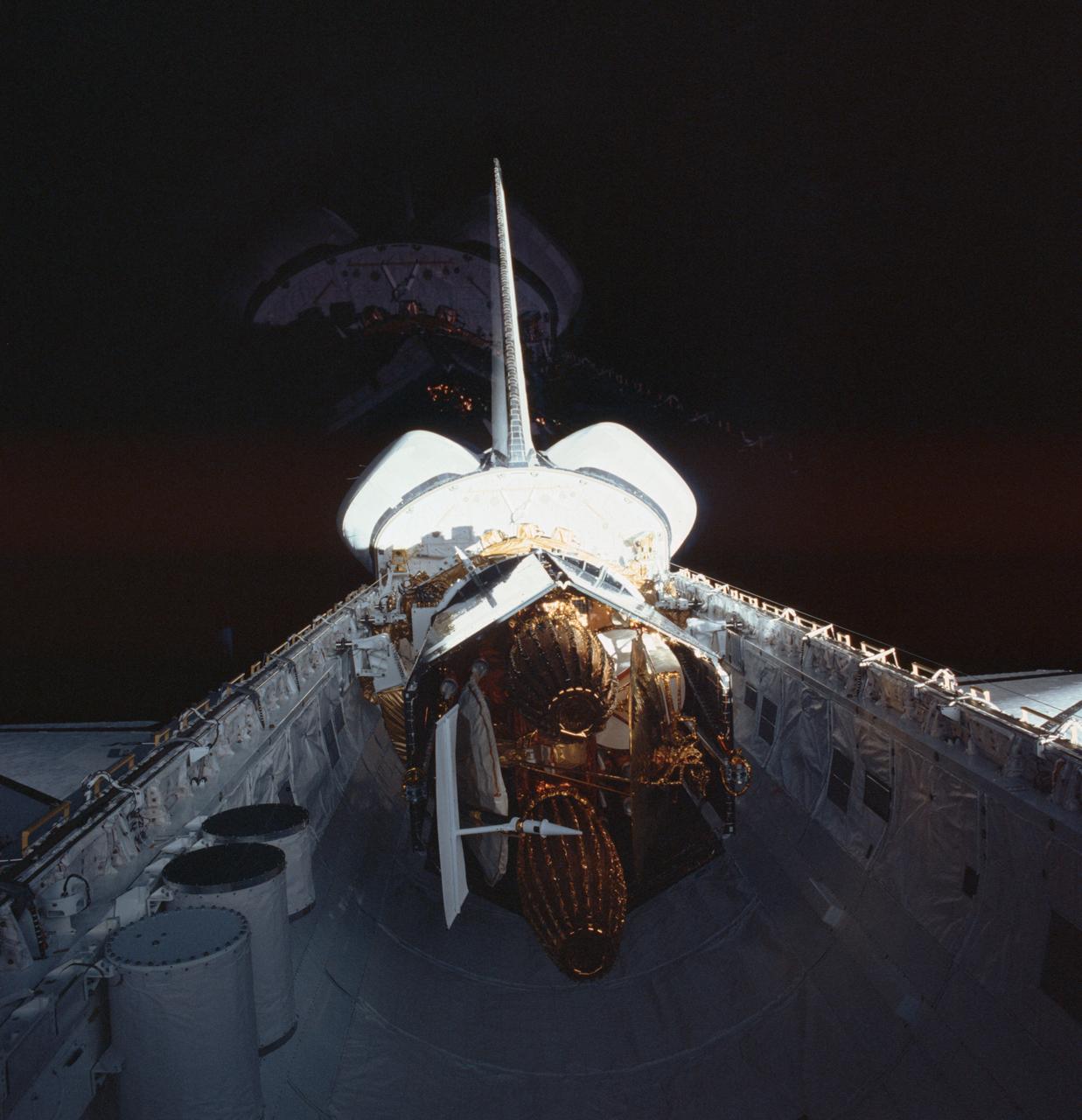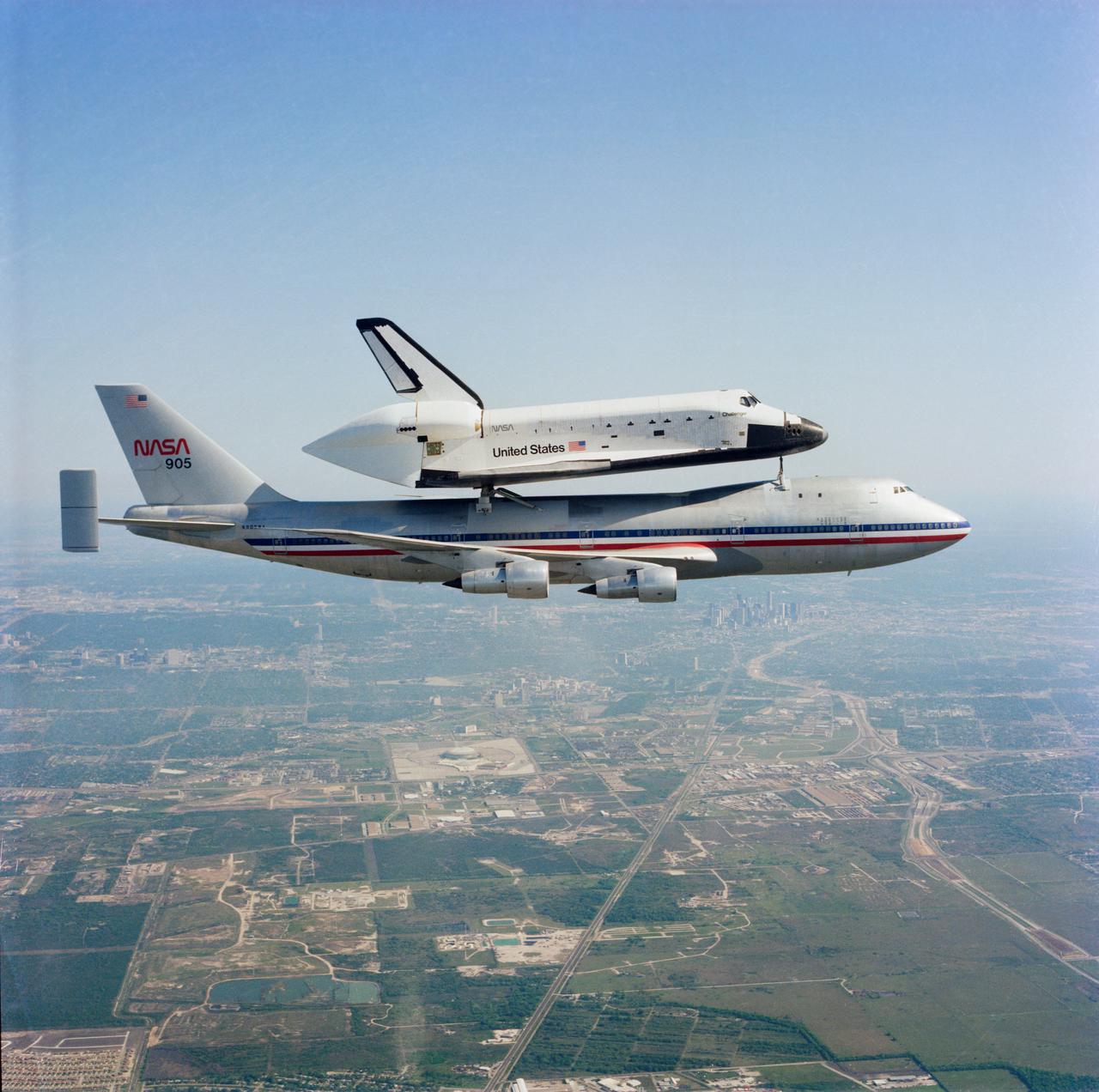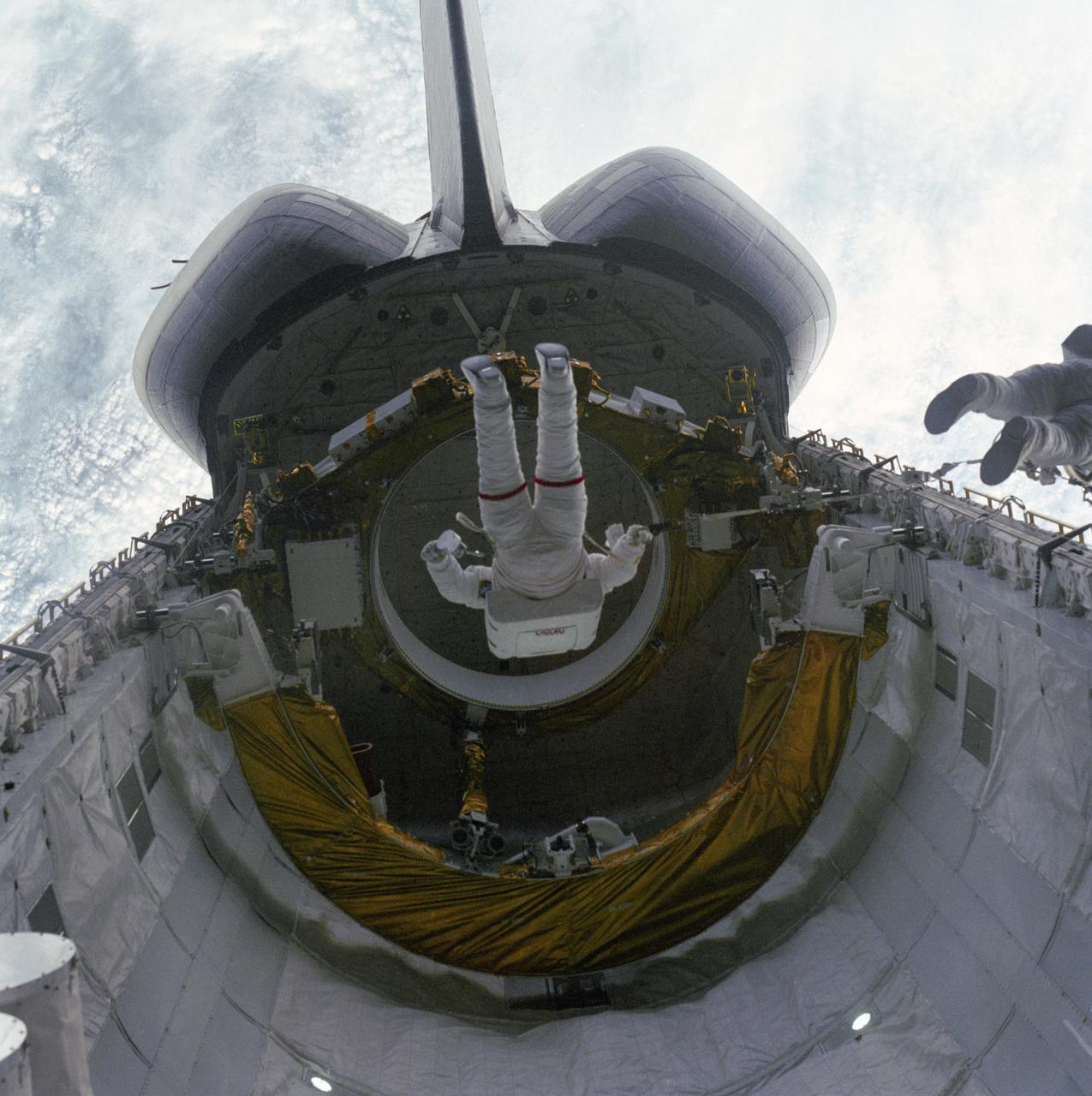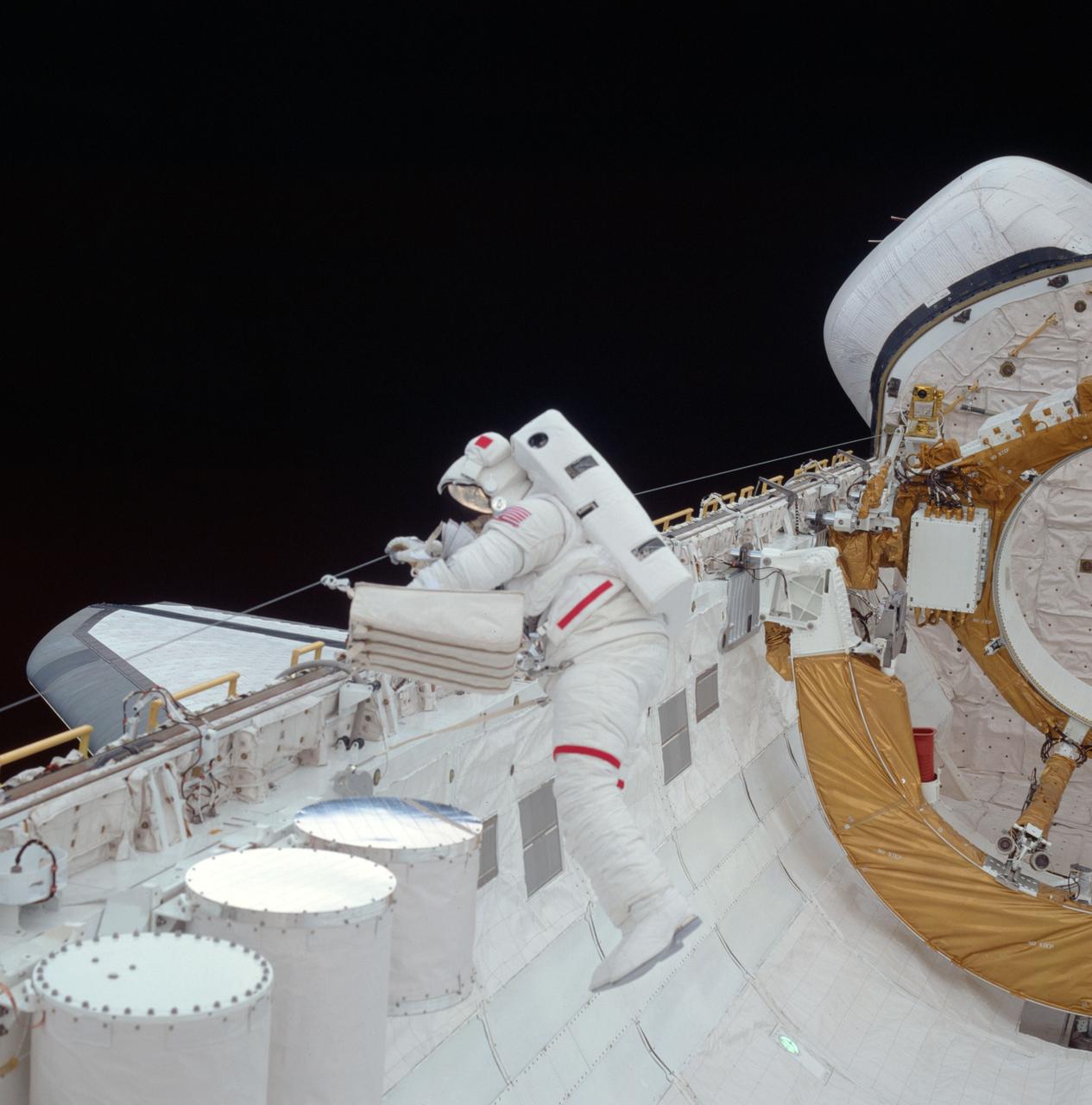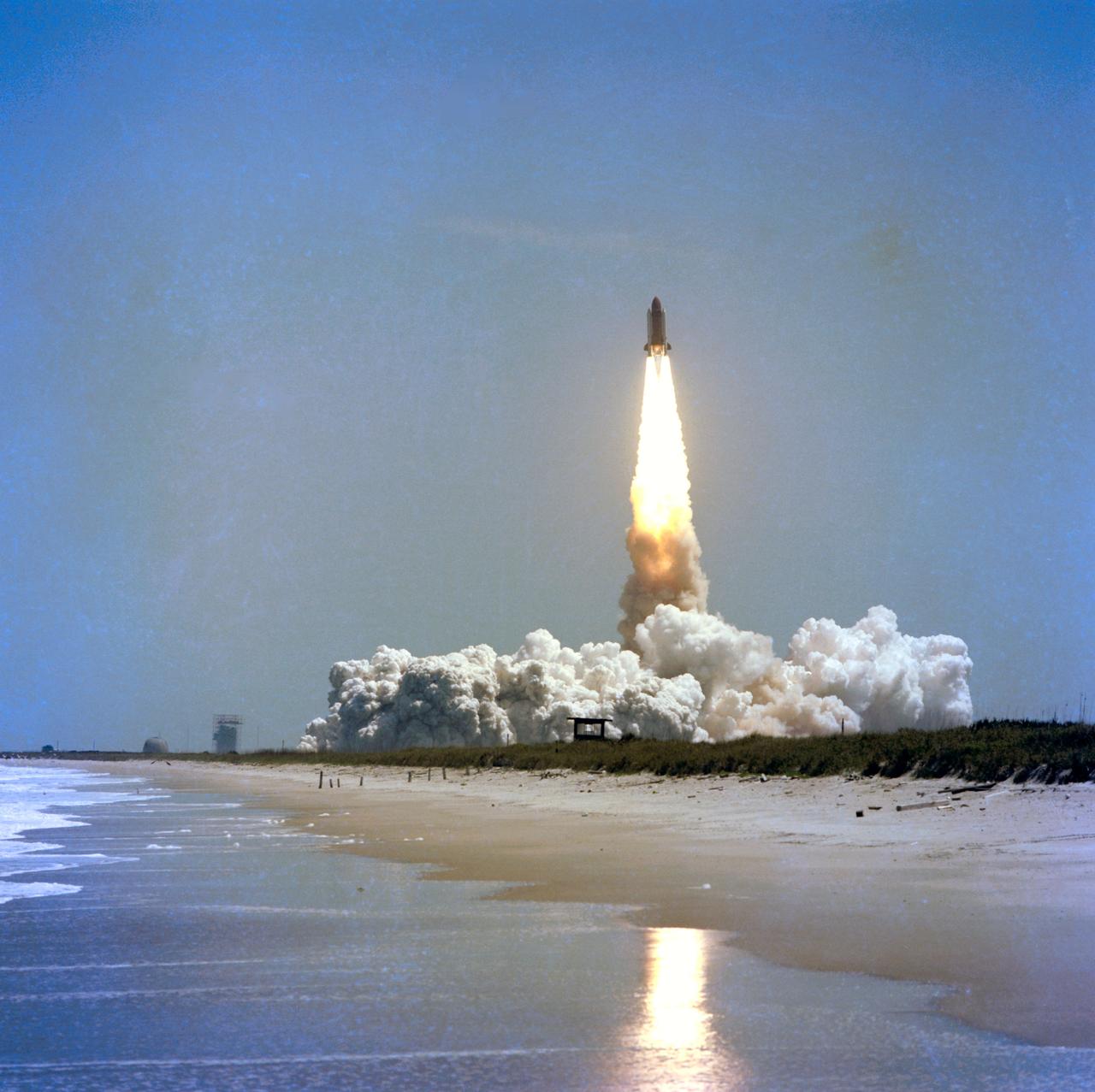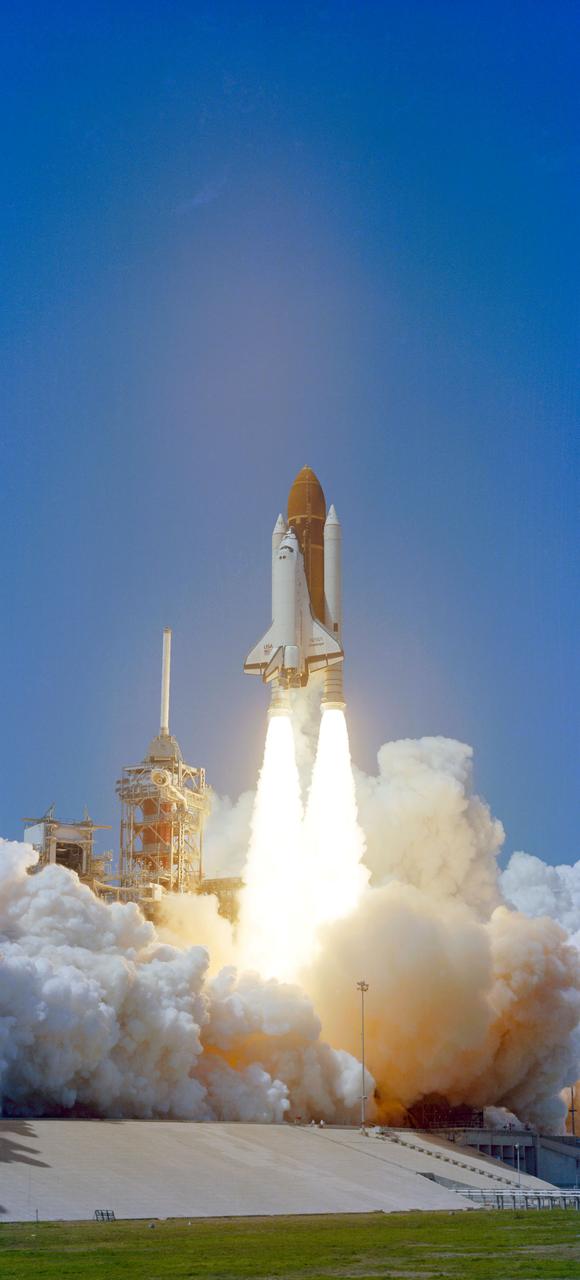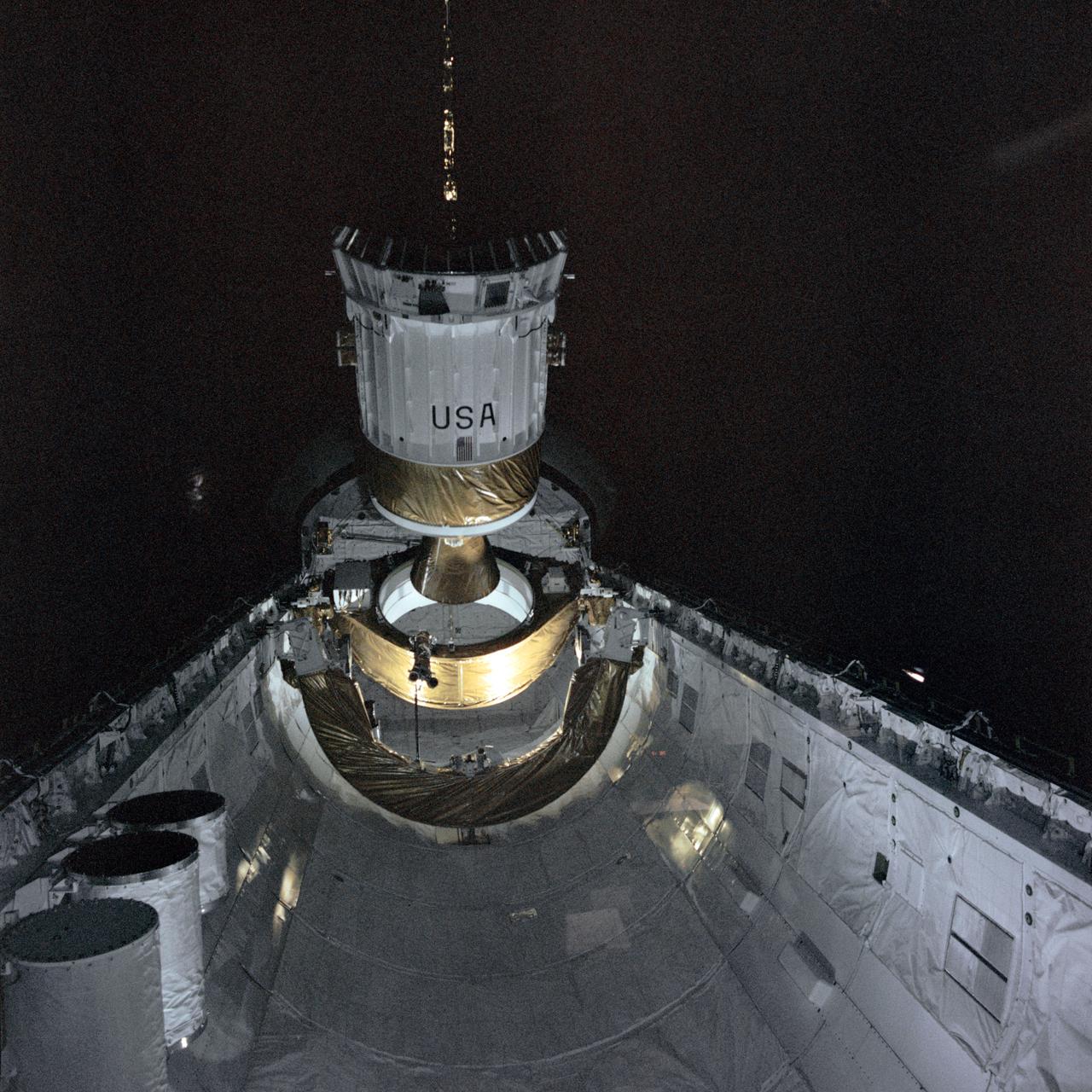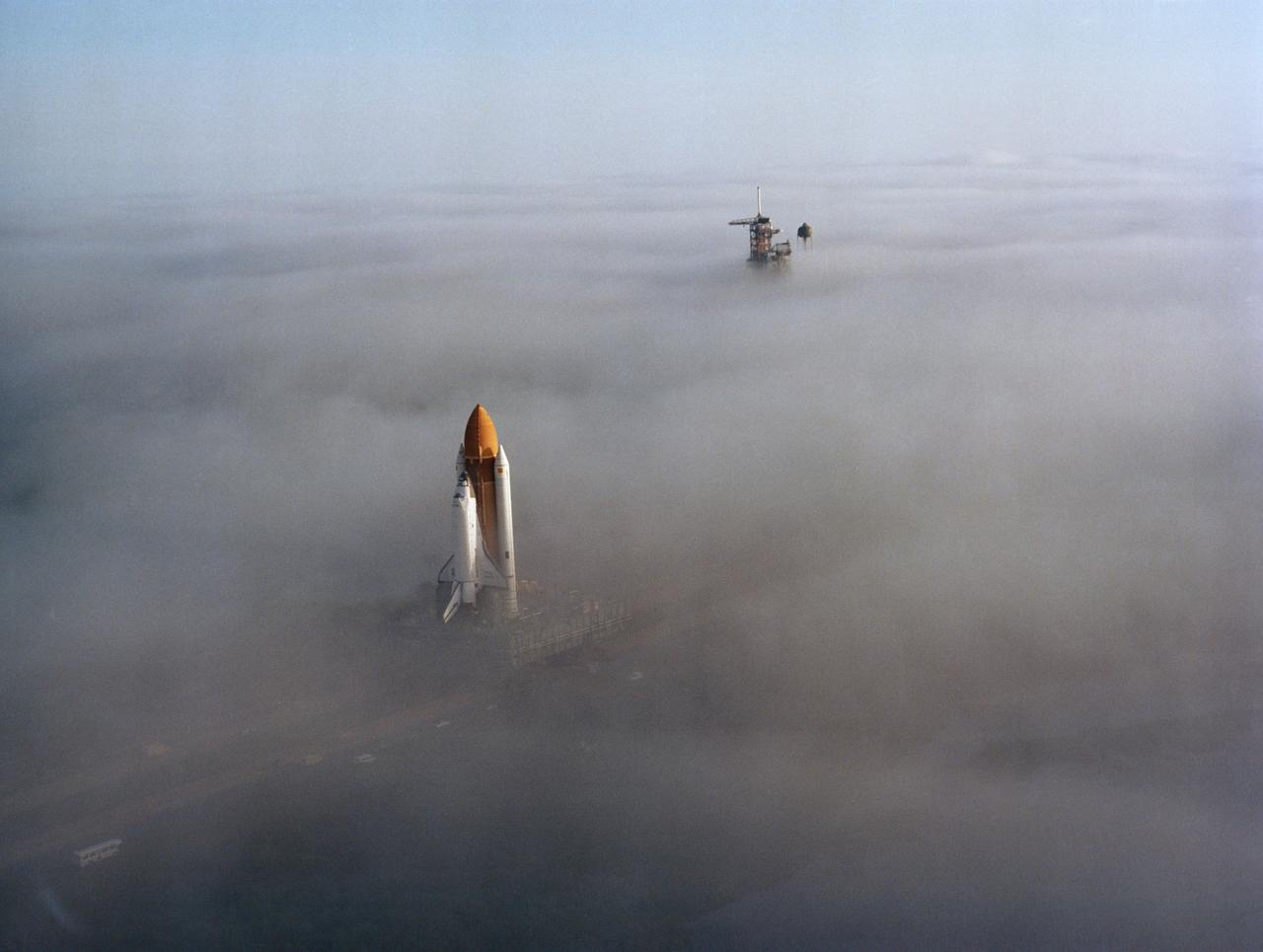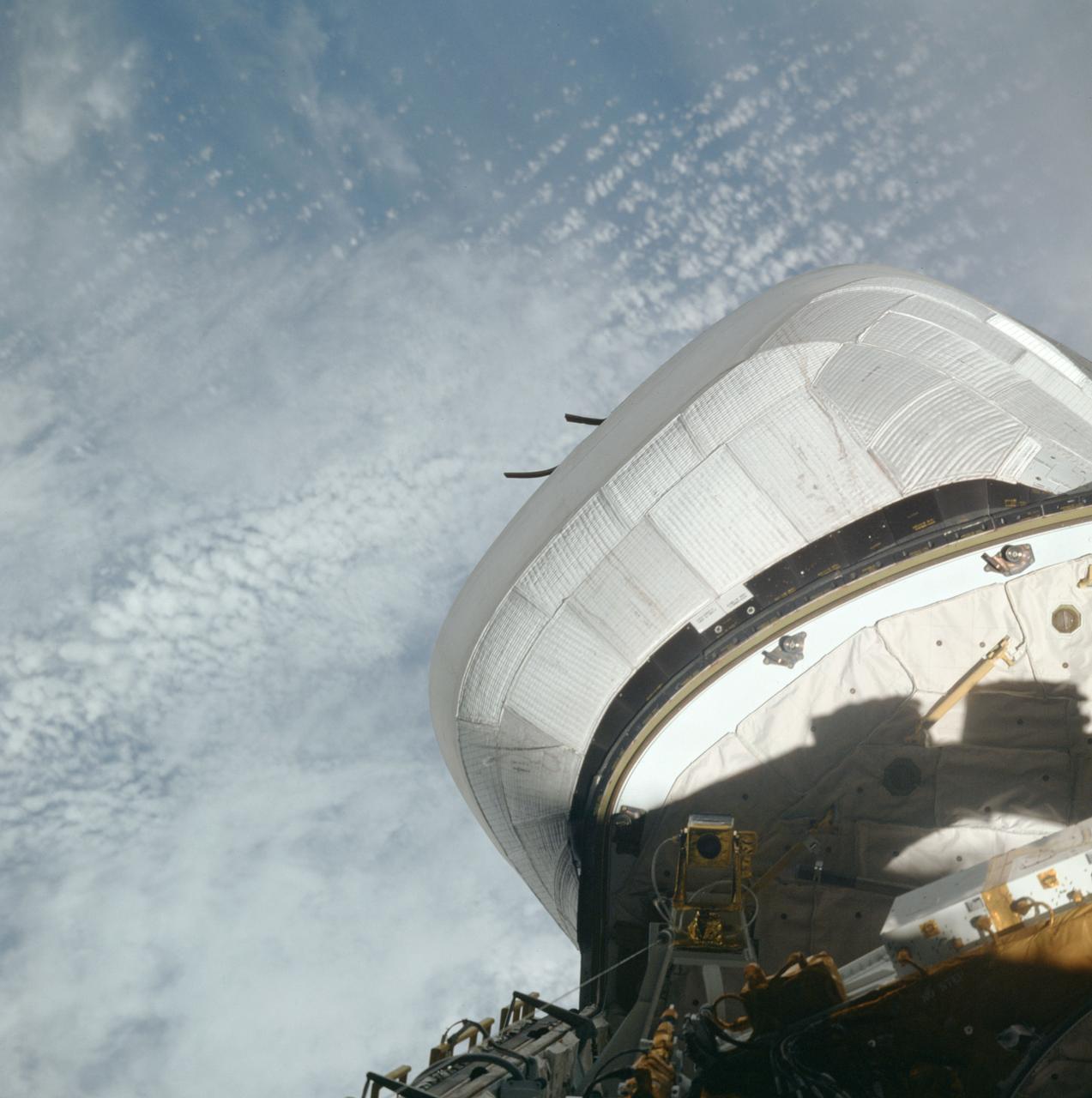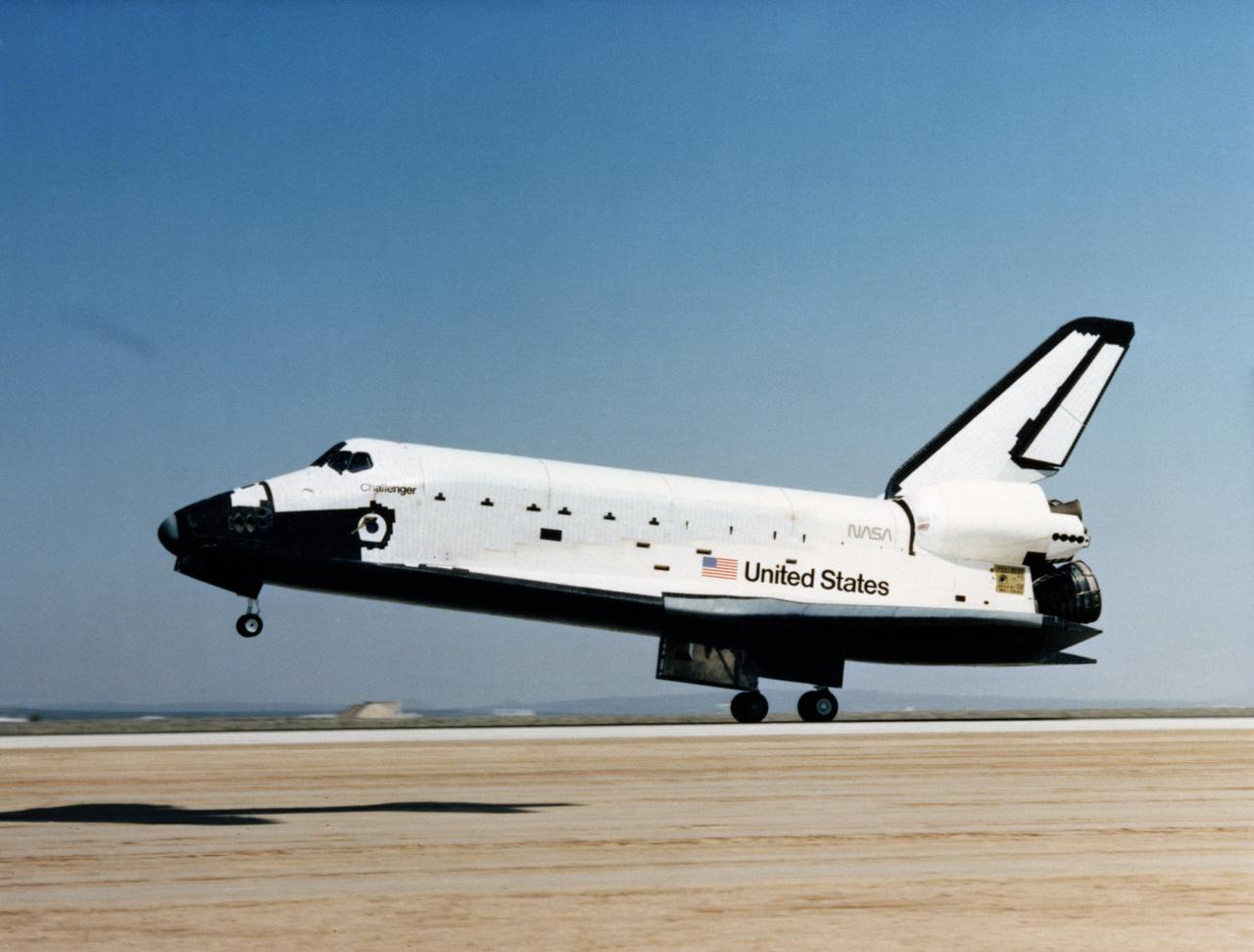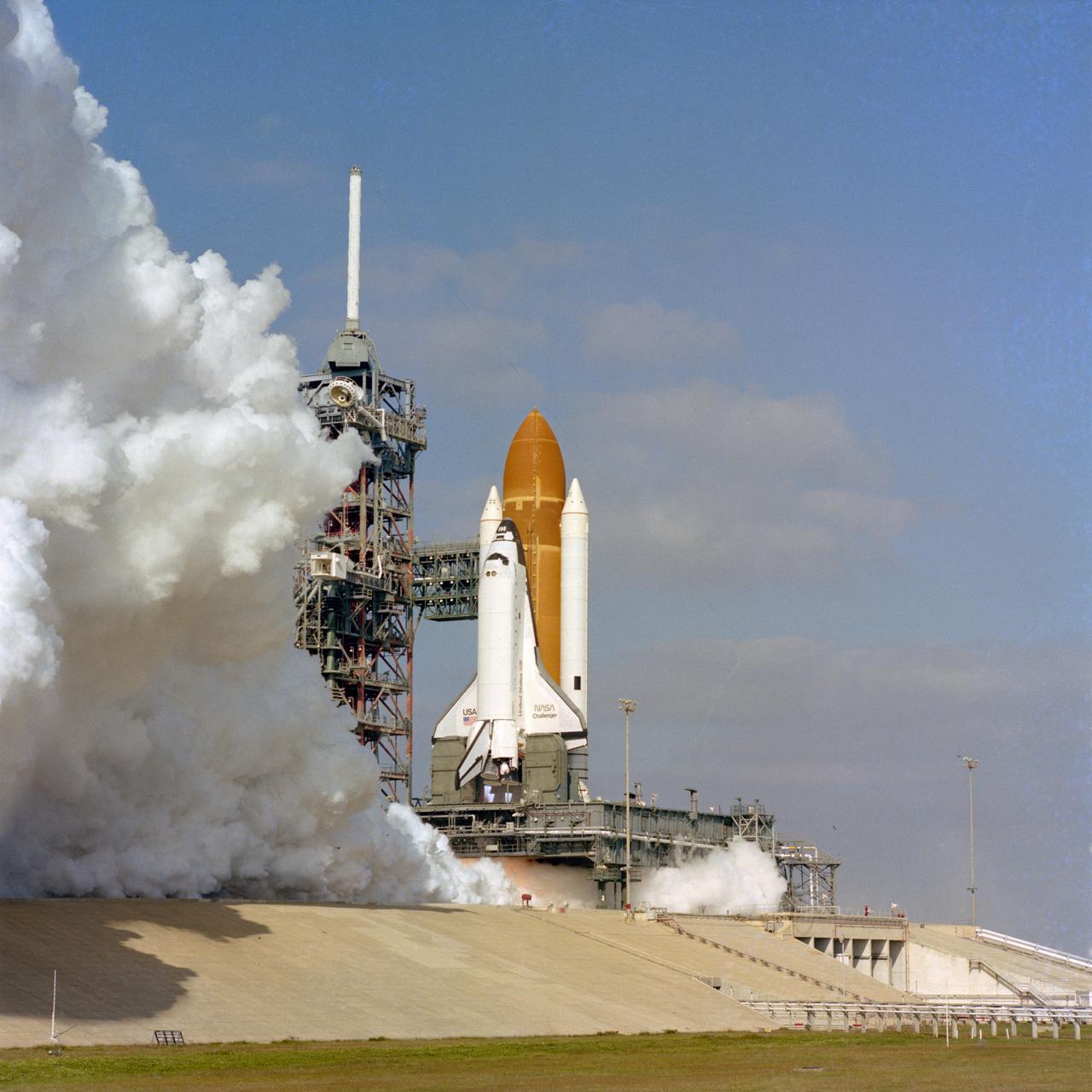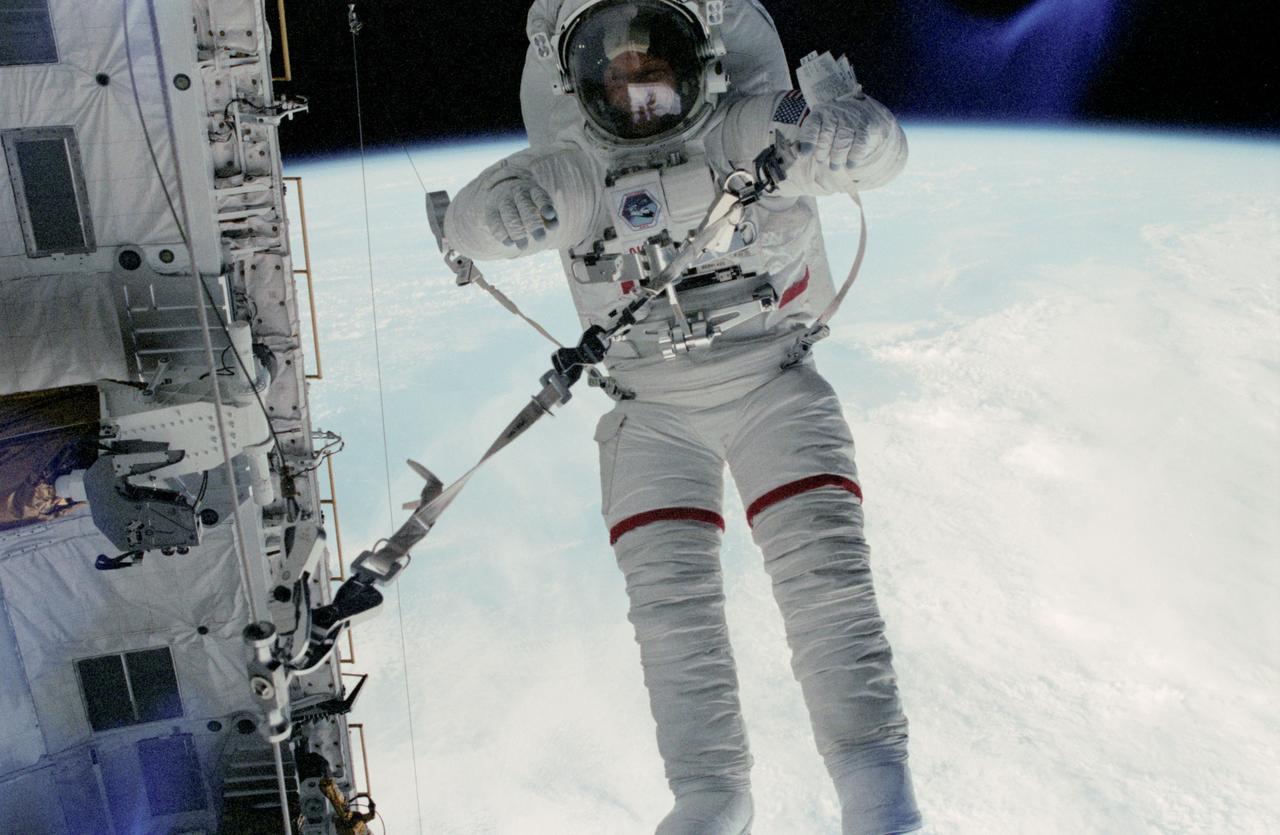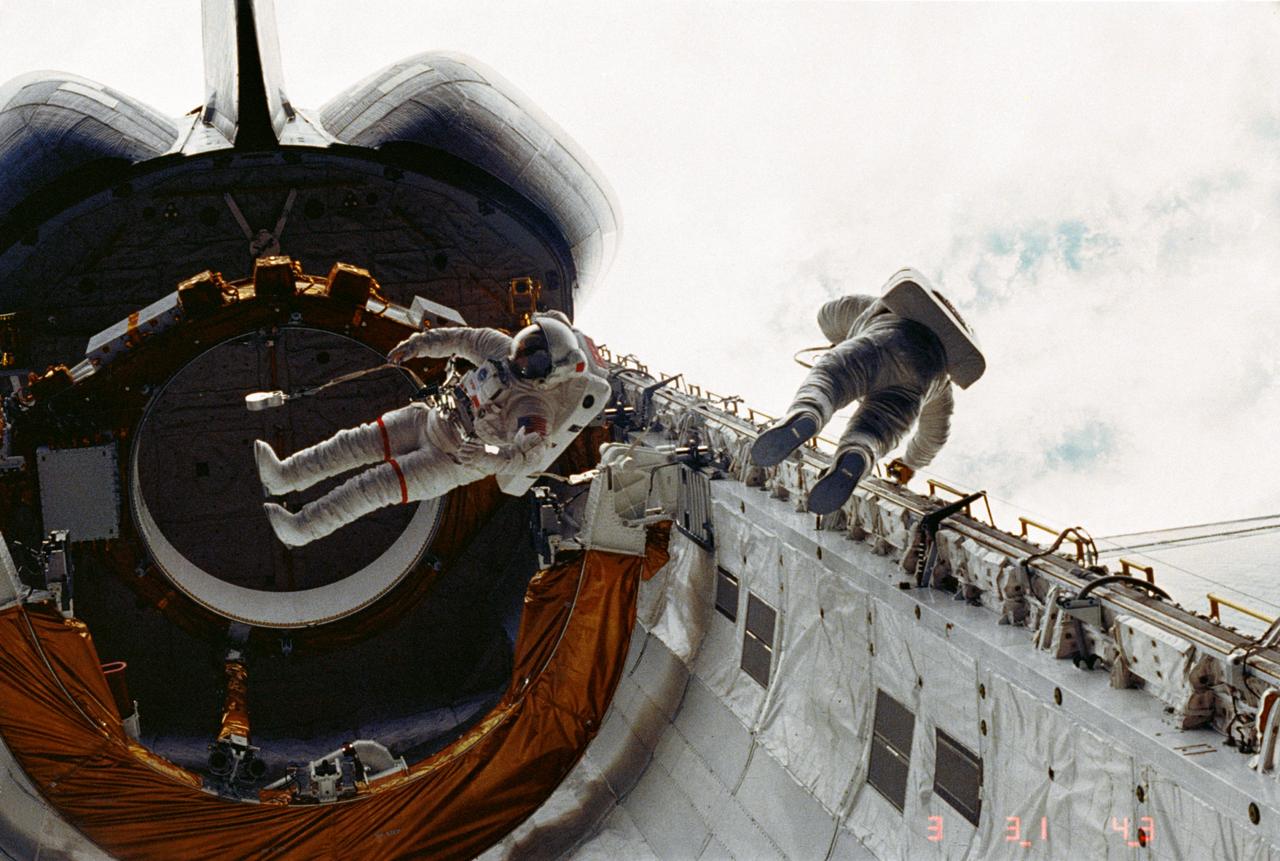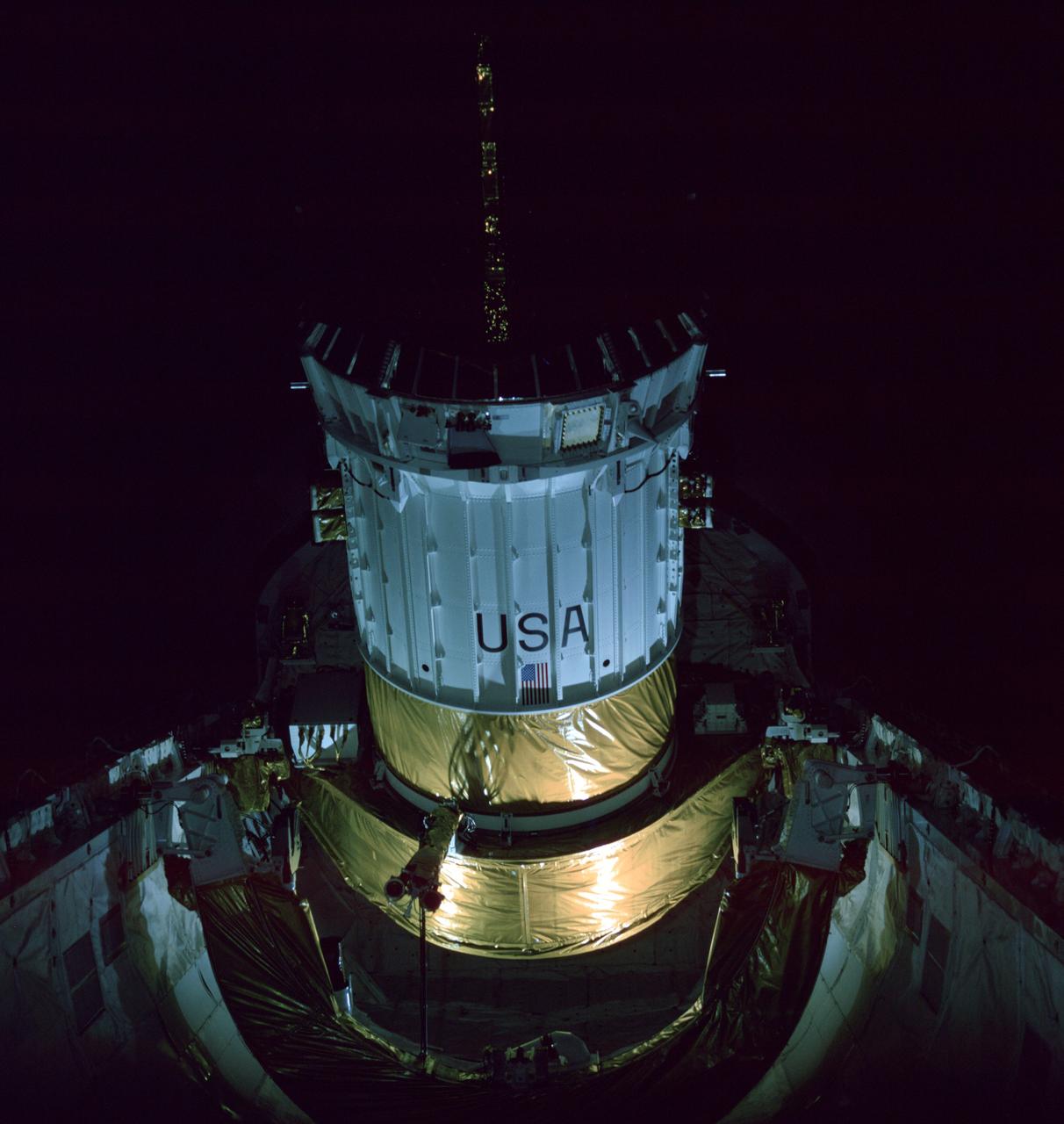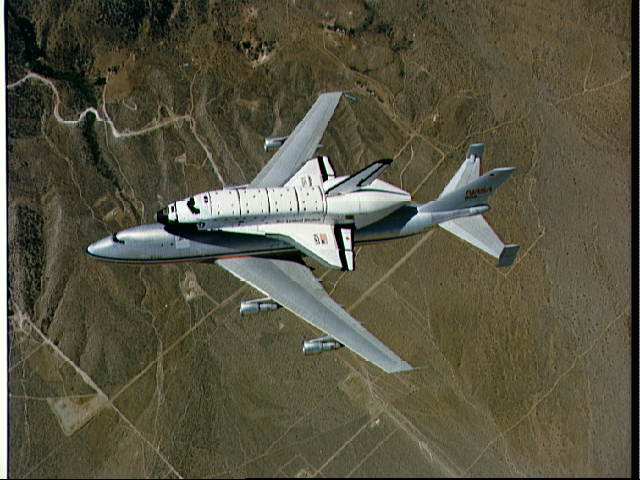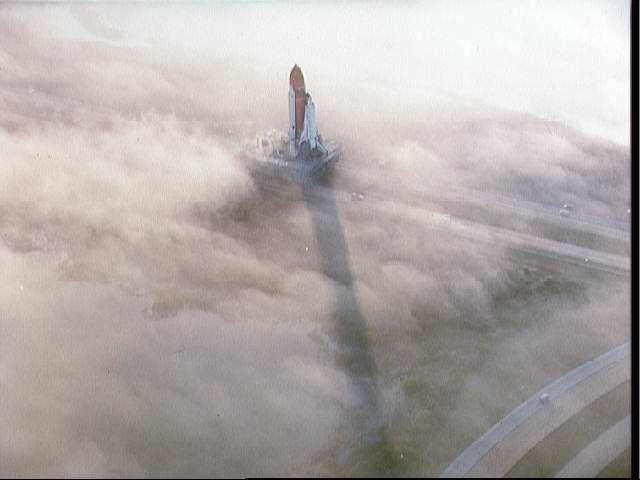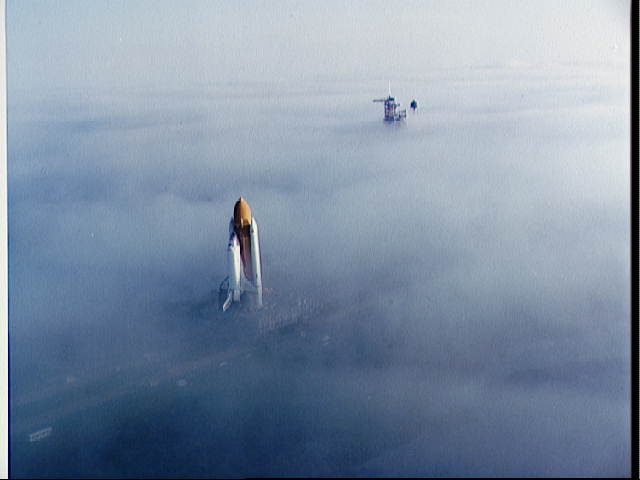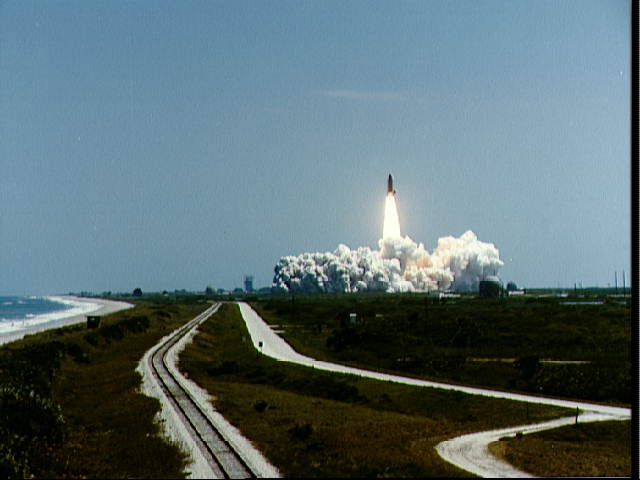STS-6 Fact Sheet
By Cliff Lethbridge

STS-6 — Challenger
6th Space Shuttle Mission
1st Flight of Challenger
Crew:
Paul J. Weitz, Commander
Karol J. Bobko, Pilot
Donald H. Peterson, Mission Specialist
F. Story Musgrave, Mission Specialist
Orbiter Preparations:
Tow to Orbiter Processing Facility – July 6, 1982
Rollover to Vehicle Assembly Building – November 23, 1982
Rollout to Launch Pad 39A – November 30, 1982
Launch:
April 4, 1983 – 1:30:00 p.m. EST. Launch had been set for January 20, 1983 but was postponed due to a hydrogen leak into the Main Engine Number One aft compartment discovered during a 20-second Flight Readiness Firing (FRF) of Challenger’s main engines conducted on December 18, 1982.
Cracks in Main Engine Number One were confirmed to be the cause of a leak during a second FRF on January 25, 1983. All three main engines were removed while Challenger was on the launch pad and fuel line cracks were repaired. Main Engines Two and Three were reinstalled following extensive failure analysis and testing. Main Engine Number One was replaced.
An additional delay was caused by contamination to the Tracking and Data Relay Satellite-1 (TDRS-1) during a severe thunderstorm. April 4 launch occurred as scheduled with no delays.
Landing:
April 9, 1983 – 10:53:42 a.m. PST at Runway 22, Edwards Air Force Base, California. Rollout distance was 7,244 feet. Rollout time was 49 seconds. Mission duration was 5 days, 0 hours, 23 minutes, 42 seconds. Landing occurred during the 81st orbit.
Mission Summary:
The primary payload, NASA’s Tracking and Data Relay Satellite-1 (TDRS-1) was deployed. A malfunction of the satellite’s Inertial Upper Stage (IUS) booster resulted in placement of the craft in an improper but stable orbit. Using additional unconsumed propellant aboard the satellite, engineers were able to steer TDRS-1 into its proper position in an effort which took several months.
The first spacewalk in the Space Shuttle program was performed by astronauts Petersen and Musgrave on April 7, 1983 and lasted 4 hours, 10 minutes. The spacewalk was intended primarily to test spacewalk operations, the space suits themselves and procedures astronauts would use in the Shuttle’s payload bay should an emergency contingency spacewalk become necessary in the future.
Other payloads included Continuous Flow Electrophoresis System (CFES), Monodisperse Latex Reactor (MLR), Radiation Monitoring Experiment (RME), Night/Day Optical Survey of Lightning (NOSL) and three GAS canisters. The flight used the first lightweight external tank and solid rocket booster casings.
SELECTED NASA PHOTOS FROM STS-6
